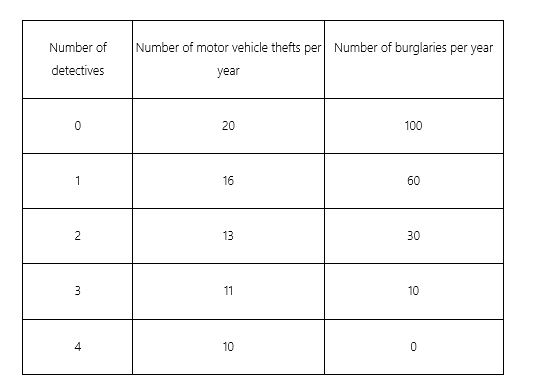Multiple Choice
Consider a police department trying to decide how to allocate its crime prevention resources between motor vehicle thefts and burglaries. The marginal benefit of one less motor vehicle theft is $20,000, and the marginal benefit of one less burglary is $1,000. Suppose the annual number of motor vehicle thefts and the annual number of burglaries depends on the number of detectives assigned to each type of crime, as shown in the table below. Each detective costs $35,000 each per year, regardless of whether the detective is assigned to motor vehicle thefts or burglaries.  The marginal benefit of the fourth detective assigned to burglaries is ______ per year.
The marginal benefit of the fourth detective assigned to burglaries is ______ per year.
A) $10,000
B) $0
C) $200,000
D) $20,000
Correct Answer:

Verified
Correct Answer:
Verified
Q18: The greater the degree of labor market
Q19: Insurance that pays all expenses generated by
Q20: The Federal Aviation Administration requires large commercial
Q21: According to the Manning study, people with
Q22: In the United States, the emergence of
Q25: The textbook cites a study comparing a
Q26: Suppose the figure below shows Luke's demand
Q27: It is socially optimal to hire an
Q28: The graph below illustrates the marginal cost,
Q184: The most efficient distribution of pollution abatement